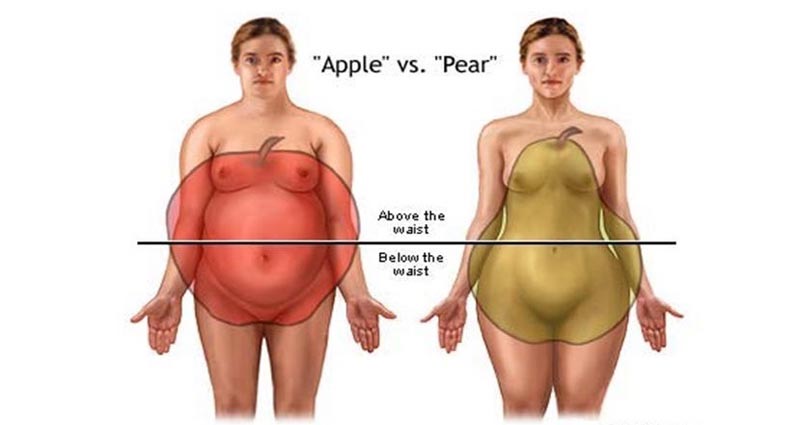Location of body fat moderates weight-based self-devaluation and perceived social devaluation in women.
Summary Overweight and obese ("overweight") people devalue themselves because, it has been proposed, they are socially devalued. However, in the case of women , social valuation not only depends on the amount of weight they have, but also where on the body they have it. Here we investigate whether weight-based self-valuation and perceived social valuation depend similarly on body shape. Study 1, which used a nationally representative sample from the National Health and Nutrition Survey (NHANES; N = 1,093 women of reproductive age), showed that, controlling for body fat, weight labeling (self-reported). and others) and the desire to lose weight depended on body shape. Study 2, in a direct test of predictions using a sample of college women (N = 215), demonstrated that with increasing body fat, women with abdominal weight distribution reported greater self-devaluation ( e.g., lower self-esteem) and the perception of social devaluation (e.g., greater perception of weight discrimination); However, women with a gluteus-femoral weight distribution were partially or completely protected from these adverse effects of increased body fat. |

Comments ( University of Arizona )
Study shows that body shape can predict whether women devalue themselves
Body shape, not just weight, drives the stigma associated with overweight and obesity, and now a new study has shown that the location of fat is also linked to how women feel about their bodies.
The work, from the Department of Psychology at Arizona State University, showed that women with fat located in the hips, buttocks and thighs devalue themselves less than women of the same weight but with fat located in the abdomen.
The study was published in Social Psychological and Personality Science .
"Body shape determines how society treats us," says Michael Barlev, a research assistant professor at ASU and lead author of the paper. "Perhaps because of this, it also determines how we treat ourselves. In the case of women who have more fat in their abdomen , excess fat is associated with more negative thoughts or feelings about themselves, such as lower self-esteem. But "For women who have more fat in their hips , buttocks, and thighs, the self-depreciation that many people assume comes with being overweight or obese is greatly reduced, and sometimes eliminated."
Researchers analyzed body composition data from the Centers for Disease Control and Prevention and measured body composition and fat location in participating college students. Body shape was related to the way women said they felt about themselves and coincided with social perception of their bodies.
The location of fat on the body determines body shape, but is also indicative of different biological functions and health outcomes. Gluteofemoral fat located in the hips, buttocks and thighs of women appears to contribute to brain development in children and indicates future success in having children. Gluteofemoral fat is also linked to fewer health problems than abdominal fat, which is associated with cardiovascular disease and diabetes.
"Fat stigma can be quite psychologically costly," said Steven Neuberg, a Foundation Professor, chair of the ASU Department of Psychology and senior author of the paper. "Understanding the nuanced ways people think about their own body fat will likely lead to better approaches to reducing not only the costs of such stigma, but also the stigma itself."
The research team also included Ahra Ko, a psychology graduate student at ASU, and Jaimie Arona Krems, an assistant professor at Oklahoma State University. This study was funded by the Arizona State University Foundation for a New American University, with support from the Mayo Clinic and ASU Obesity Solutions.
















